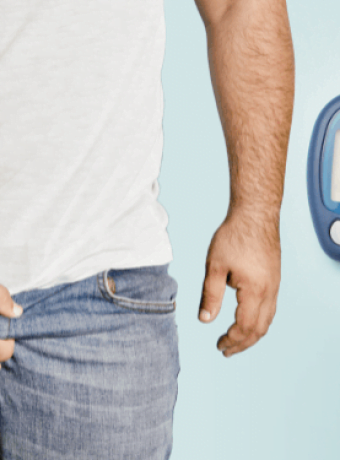Best Exercise for Diabetes to Burn Calories Quickly

Last Updated on May 10, 2024 by Lauretta Iyamu, PharmD
Exercise recommendations for people with diabetes used to be complicated; 30 – 40 minutes of moderate exercise 3 or 4 times a week. Recent studies show that you can benefit from exercising by doing physical exercise if it is mild to moderate but done for shorter periods every day of the week. This sounds as good as the most significant excuse people give for not exercising is lack of time. But the more you exercise, the better off you will be. Continues reading to learn the best exercise for diabetes to burn calories quickly.
What are the Best Exercises for Diabetes?
Types of Physical Exercises for Diabetes
-
Aerobic Exercise for diabetes

Aerobic exercise helps your heart, lungs, and blood vessels by increasing your body’s ability to use oxygen and thus reduces your risk of heart attack, stroke, and other cardiovascular diseases.
Aerobic exercise is perfect if you have diabetes. It is done continuously, rhythmically, in intervals, and for endurance. Running and walking are the two best aerobic exercises for many people.
If you are above 40 years of age, you should stick to walking, except if you’re an experienced runner. You can get all the benefits of aerobic exercise from walking; it is free, everyone can do it, you do not need a specific location, and it can be done at any time.
Walking is good for relaxing, controlling blood sugar, lowering blood pressure, and increasing blood circulation, especially for your feet.
Recent studies show that aerobic exercise also helps lower blood lipid levels, with weight loss, reduces stress, increases muscle tone and strength, and reduces the risk of osteoporosis.
Examples of aerobic exercises include jumping rope, taking aerobic classes, rebounding on a trampoline, riding a stationary or bicycle, skiing, and practicing tai chi.
-
Anaerobic exercise for diabetes

Anaerobic exercise is often very intense and uses energy stored in your muscles.
Examples of anaerobic exercise include;
- weightlifting
- calisthenics.
These exercises are not particularly effective in improving cardiovascular conditions. Calisthenics helps to develop and improve the range of motion in joints and muscles. If you have diabetes, you will benefit more from aerobics than anaerobic exercises.
Intensity of Activity for Diabetes
You should apply common sense when planning to exercise to know your level of exercise intensity. Exercise experts classify intensity levels into;
-
Moderate activity of short duration:
This involves walking a mile or bicycling for less than 30 minutes
-
The moderate activity of intermediate duration:
Examples of such exercise include swimming, tennis, jogging, leisurely bicycling, gardening, golfing, or vacuuming for 1hour.
-
The intense activity of long duration:
Examples are football, hockey, strenuous bicycling, shoveling heavy snow, skiing, or hiking for 2hours or more.
Table 1: Simple Exercises and Approximate Number of Calories Burned in 30 Minutes.
|
EXERCISE |
CALORIES BURNED |
| Sitting | 40 |
| Sleeping | 50 |
| Driving | 50 |
| Walking two mph | 110 |
| Bowling | 125 |
| Housework | 140 |
| Horseback riding | 175 |
| Square dancing | 175 |
| Swimming leisurely | 200 |
| Bicycling leisurely | 200 |
| Tennis (doubles), weeding, raking | 200 |
| Walking four mph | 225 |
| Playing golf, mowing the lawn | 225 |
| Ice skating | 235 |
| Cycling 5.5 mph | 250 |
| Scrubbing floors | 270 |
| Tennis (singles), digging, hoeing | 270 |
| Skiing 10 mph | 300 |
| Squash and handball | 300 |
| Jogging 5.5 mph | 320 |
| Jogging five mph | 350 |
| Cycling 13 mph | 500 |
Conclusion
Suppose you have diabetes, are taking insulin, and plan to exercise strenuously for long periods. You need to consult your doctor or sports medicine specialist about incorporating food intake and insulin injections into your exercise program.
You should also check out the best type of exercise that fits your level of intensity.
Exercise is beneficial to maintain a controlled blood sugar level, especially in type 2 diabetes and if you’re obese. Take action today, continue slowly, and make it a fun part of your daily living to control your blood sugar and stay healthier!
Reference
1.Kirwan JP, Sacks J, Nieuwoudt S. The essential role of exercise in the management of type 2 diabetes. Cleve Clin J Med. 2017;84(7 Suppl 1):S15-S21.



